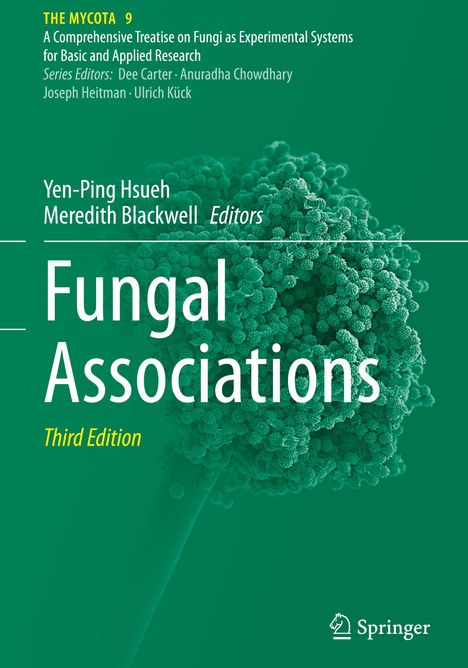Fungal Associations
Fungal Associations
Buch
- Herausgeber: Meredith Blackwell, Yen-Ping Hsueh
- Springer International Publishing, 01/2024
- Einband: Gebunden, HC runder Rücken kaschiert
- Sprache: Englisch
- ISBN-13: 9783031416477
- Artikelnummer: 11745820
- Umfang: 376 Seiten
- Nummer der Auflage: 24003
- Auflage: 3rd edition 2024
- Gewicht: 988 g
- Maße: 260 x 183 mm
- Stärke: 25 mm
- Erscheinungstermin: 26.1.2024
Achtung: Artikel ist nicht in deutscher Sprache!
Klappentext
Fungi are associated with a wide variety of other organisms. Ecologist Peter Price has said, mutualism facilitates adaptive radiation, and many biologists attribute Earth s great fungal diversity to such associations. The 3rd edition of The Mycota, Vol. 9: Fungal Associations, has been revised to provide entirely new coverage of fungi and associated organisms in fourteen informative discussions that take advantage of today s large public databases and modern molecular and data analysis methods. The editors have a keen interest in fungal associations in their own research, and their perspectives from different generations have resulted in an interesting treatment of the subject.Fungal Associations includes updates of classic topics, but also introduces less frequently discussed associations and broader reflections on the nature of fungi and their associates.
The volume begins with a look at more than abillion years of fungal evolution and associations through the lens of immunology.
Can fungi involved in obligate symbioses be cultivated apart from the host? Genomes help to answer the question.
The ultimate intimacy between fungi and certain unrelated organisms has resulted in DNA exchange that can be traced in extant genomes.
Fungi and bacteria use volatile compounds to lure participants into interactions.
Some viruses modify the phenotype of their fungal hosts and affect host fitness.
Details of interactions between classical examples of fungus plant symbioses (lichens, several types of mycorrhizae, and toxic endophytes) benefit from advanced microscopic and molecular techniques.
Discussions of fungi associated with insects (entomopathogens, a Drosophila model to study entomopathogens), nematode-trappingfungi and their prey, and a group of termite-associated fungi that produce secondary metabolites with potential uses as pharmaceuticals, complete the volume.
Fungal Associations is a well-illustrated, thought-provoking resource for specialists and generalists, including researchers, lecturers, and students interested in ecology, evolution, microbiology, and mycology. The volume would be an excellent text for a seminar course for advanced undergraduate or graduate students.

Fungal Associations
EUR 219,03*

